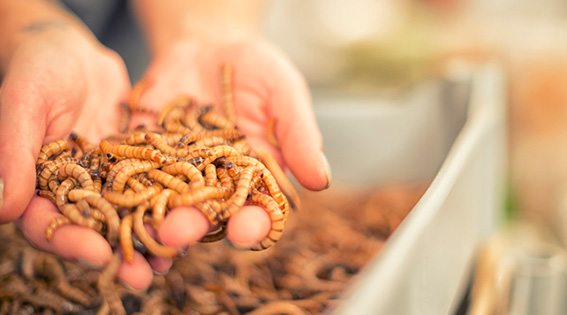Plastics are part and parcel of our life. We just can’t imagine a day without plastic, from morning packed milk to nights sleeping bag our life is filled with plastics. But all this came at a terrible price. From ocean to land wherever it reaches it pollutes those areas. It’s just too stubborn to leave us and vice versa. Getting rid of plastics is an impossible mission, at least that’s what we thought till now.
A small worm is doing something which is unattainable, they are digesting something which is indigestible. They are eating and digesting plastic. These saviours are called “Mealworms”. Before we study about our saviour, let’s first see what they are saving us from.
Since the dawn of humankind, we have been dependent on those things that nature produces. Stuffs like silk, resin, and other stuff which exhibit plastic properties are extracted from nature. Then times changed, nature has limits in its production but the population of humans doesn’t, hence demand for these things rose. Alexander Parkes in 1855, created something called celluloid and in 1907, American Leo Baekeland invented the first synthetic plastic called Bakelite. The era of plastics began from there. It’s ironic since earlier plastics were thought to be a saviour. The plastic took different forms and different shapes as the humans desired. Now one and a half centuries from the first plastics were created, we are looking for ways to get rid of it.
Plastics are made from a process called polymerisation or polycondensation of natural products. It forms a long chain of carbon, which is strong and unbreakable, hence they are hard to decompose. On the contrary, naturally occurring products are easily decomposable. As Kenneth Peter, an organic geochemist at Stanford University, told Live Science “Nature doesn’t make things like that (plastics), so organisms have never seen that before”.
Coming back to the worms, these worms are the larvae of some type of darkling beetle. They were commercially used for feeding pigs and chicken until they found it can eat plastic. To digest a Styrofoam coffee cup it takes around 3,000 to 4,000 mealworms, and need a week to fully eat them. Slow but better than nothing. While digesting polystyrene which contains toxic products, the worm excretes these products really quickly before it affects its body.
How they developed eating and digesting plastic is still a mystery on which researchers are working. The plastics are digested by the powerful bacteria which lives inside the gut of these work. Since plastics don’t have any nutrients, the energy is gained from breaking these complex plastic molecules.
Currently researchers are working on isolating the bacteria in the gut of the mealworm which is responsible for this breakdown of plastic. After that they plan to grow them in a bioreactor which will help in the extraction of enzymes that can degrade plastics which would be a solution for plastics.
All said, the real problem is not the plastics but the way we use the plastics. We may find a proper solution for degradation of plastics but if we keep on using plastics without thinking, the job would get tougher and tougher. So always remember the 3R, Reuse Reduce and Recycle.

